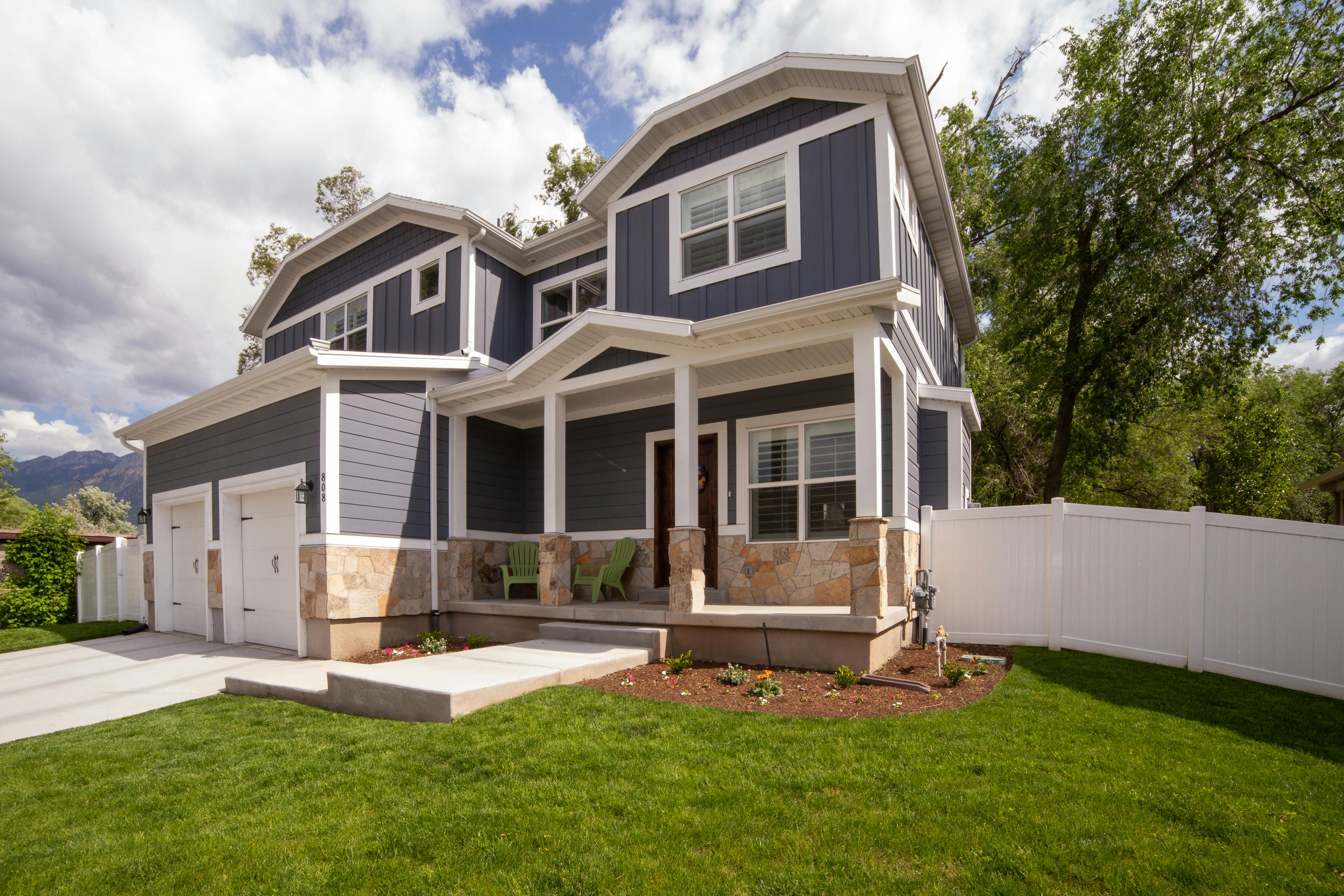You’ve finally found the perfect lot, in the neighborhood of your choice, at a price you can afford. Now you have to decide what kind of house you want to build. In fact, you may even know the home you want, whether it’s a large rambling farmhouse, with a wraparound porch reminiscent of your grandmother’s house, a rustic log cabin, or a more modern luxury home. Regardless of what you choose, the first thing you’ll need is a set of house plans.
An architect can draw up plans to your exact specifications, but this can be very expensive. A building contractor may display a selection of home plans to choose from, but perhaps a better and less expensive idea would be to purchase a set of pre-designed home plans. There are magazines and websites where you can buy plans for just about any style of home you can imagine.
Most home plan websites allow you to search by home style, such as country, cottage, log cabin, Tudor, or luxury home. You can also search by price, designer, number of bedrooms, number of floors, garage, etc. not all sites offer all search options.
Informative articles or frequently asked questions (FAQs) are available on most sites. These provide information on the different types of plan sets available and what is included in each, making changes to the home plan you choose, the return policy, finding a builder, the return policy and a series of other questions. For questions not covered in the information section, there is usually a toll-free number you can call to get answers to your questions.
The types of house plan sets are: Building sets. Which consists of 5 to 8 complete sets of plans. This kit is what you’ll need to get a building permit, arrange financing, and actually build your home. The plans in this set include exterior views (elevations), floor and ceiling plans, basement or foundation plans, building sections, electrical schematics, and typically information on such things as structural specifications, excavation and grading, building materials, floors, carpentry and mosaics. . A building license is included, not to be confused with a building permit. The license allows you to use the plans to create the house of your dreams.
A reproducible set is available to make minor changes to your plans. The plan is drawn on erasable vellum or Mylar. This set comes with a copyright release, allowing you to make as many copies as needed to accommodate any changes you make to the original plan. It also comes with a building license, but you cannot build more than one house without first obtaining a multi-use license from the company.
The CAD suite is designed to be used when a local architect makes major changes to the original house plans. It also includes a copyright release so your designer can make copies as needed. Again, you must obtain a multi-use license if you intend to build more than one house.
A study set is primarily used for estimating costs, typically does not include foundation plans, and cannot be copied. No license is included and it comes marked with a “Not for Construction” tag. Lastly is the Unique set which is for bid fetching, is also labeled “Not for Construction”, and no license is provided.
Pre-drawn house plan designers make their drawings to comply with national building codes. You may need to hire a local architect to bring your plans up to code for your area. You may want to contact your local building agency and find out what is required to obtain a building permit.
You’ve finally chosen the plans for your new home, secured the financing, and your plans are up to code. What comes next? You must hire a building contractor and subcontractors for electrical and plumbing. Where do you start? Most areas license contractors, so make sure the people you interview have the proper qualifications and licenses. If you had a local designer modify your plans, they may be able to recommend some reputable and qualified contractors in your area. If you have done electrical or plumbing work on your current home, that person may have the name of a good builder. Always ask for and check references. Also, make sure your contract provides for rectification if the work isn’t completed, isn’t done correctly, and doesn’t meet code standards. Once you hire a qualified builder, you should have the names of plumbers, HVAC specialists, and electricians that you have worked with in the past. Check the Better Business Bureau to see if the person you’re considering has any complaints against you.
Companies that sell house plans will usually make minor changes to your plan, for an additional fee and it may not be necessary to hire a local designer. However, changes must be requested at the time of purchase.
It is possible to have your plans reversed in most cases. If your breakfast nook faces north, for example, and the best view from your lot is to the south, you can request that the plans be reversed. Most house plan websites allow you to view the reverse image online. Occasionally the view cannot be viewed online, but most companies will email you an inverted view in that case.
One thing the plans don’t include is the actual layout of the electrical, plumbing, and air conditioning work, as the designers have no way of knowing where on your lot these lines would enter the house. Your contractor will have no problem figuring it out.
There are dozens of home styles to choose from, from .A-frame to Victorian. One search option is size. A tiny house is anything up to 1500sq. foot of living space, a medium size is 1,500 to 2,500 square feet. ft A home over 2,500 square feet is considered large.
A luxury home is also 2,500 square feet. foot or more and has extras like a large master bedroom suite on the main floor, walk-in closets, media room, and home office. Premium homes are also large, often 5,000 square feet. In addition to the en-suite master bedroom and special use rooms, they generally have a bathroom for each bedroom. Music room media centers and offices are common. Garages in these homes are typically over 600 square feet.
Your dream home is out there, you just need to do your homework. When you find the right plan for your family and your lot. Make sure your contractor is licensed, reputable and qualified to do the work and follows the local building code. Make sure your contract protects you if the work is not done up to code. Keep in touch with the contractor, visit the site frequently, be there when the last detail is completed. Now relax and enjoy your new home.



